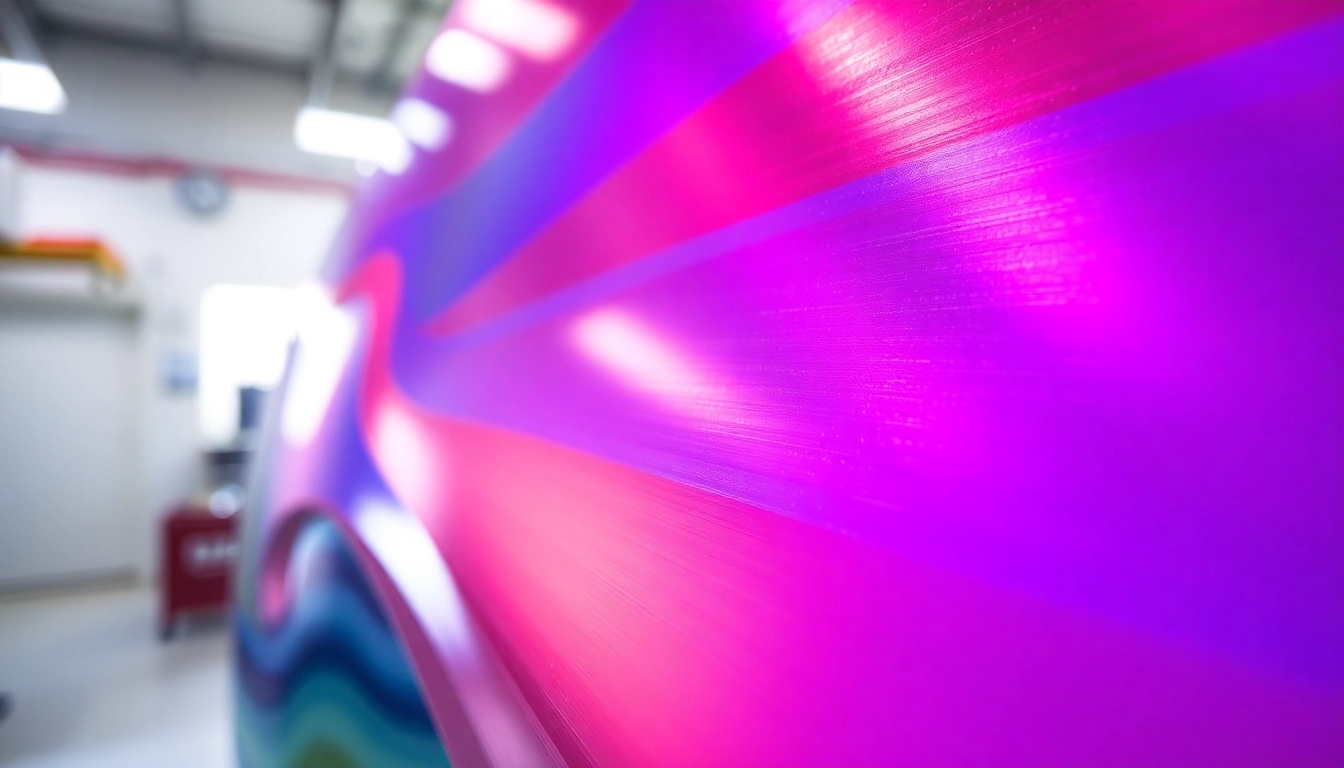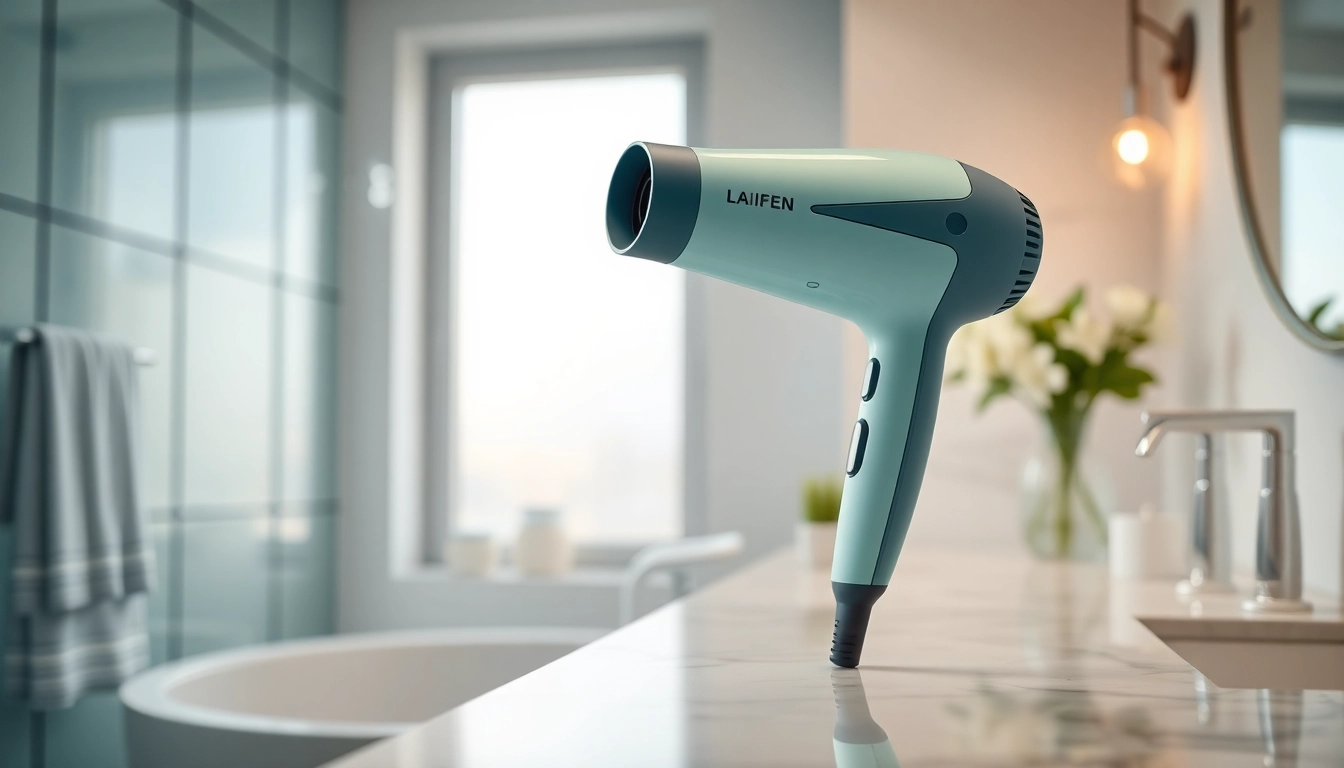Understanding Powder Coating
What is Powder Coating?
Powder coating is a popular finishing process that involves applying a free-flowing, dry powder to objects, usually metal and some plastics. Unlike traditional liquid paint that involves a solvent base, powder coating is applied electrostatically. The powder particles are charged with electricity, allowing them to adhere to the surface of the object being coated. This process results in a thicker, more robust coating compared to traditional paint while avoiding the emission of volatile organic compounds (VOCs). To complete the process, the coated object is placed in a curing oven where heat causes the powder to melt, flow, and harden into a durable finish. For more information on powder coating, let’s dive deeper into the mechanics and practical implications of this outstanding finishing method.
Powder Coating Process Overview
The powder coating process is an intricate combination of technology and artistry, designed to create a superior surface finish. The basic steps include:
- Preparation: The substrate must be carefully cleaned to remove dust, grease, and any other contaminants. This may involve sandblasting or chemical cleaning.
- Application: Using an electrostatic spray gun, the dry powder is applied to the object. This method promotes even coverage and maximizes the efficiency of the powder utilized.
- Curing: The coated object is placed in a high-temperature oven, generally between 350°F and 450°F (about 177°C to 232°C). The heat causes the powder to melt and chemically react, forming a solid polymer coating.
- Cooling: After curing, the coated item is cooled down to room temperature, and the finish hardens further.
Throughout this process, special attention must be paid to temperature settings, timing, and powder quality to ensure a flawless finish.
Common Applications of Powder Coating
Powder coating is versatile and is used across various industries, including:
- Automotive: Cars, wheels, and other parts are often powder coated for durability and aesthetics.
- Aerospace: High-performance coatings ensure both aesthetic appeal and resistance to extreme conditions.
- Furniture: Outdoor and indoor furniture benefits from powder coating due to its weather resistance and available color options.
- Architectural: Structural components such as window frames, railings, and doors are commonly coated for protection and visual appeal.
- Appliances: Home appliances utilize powder coating for finish durability and scratch resistance.
Benefits of Powder Coating
Durability Compared to Traditional Painting
One of the main advantages of powder coating is its durability. Powder coatings are more resistant to chips, scratches, and wear compared to conventional paints. They provide a hard and durable surface that can withstand impacts and abrasive cleaning materials.
Moreover, powder-coated finishes are resistant to harsh weather conditions, making them ideal for outdoor applications. They stand up against UV rays without fading and are impervious to moisture, minimizing the risk of corrosion.
Environmental Impact of Powder Coating
From an environmental perspective, powder coating is favored due to its lower emissions. Unlike liquid paints that often contain solvents that may release VOCs into the atmosphere, powder coating produces negligible emissions. Additionally, excess powder can be recycled, resulting in very little waste and increased efficiency in material use.
Cost-Effectiveness Over Time
While the initial investment in equipment and setup for powder coating may be higher compared to traditional painting, the long-term benefits far outweigh these costs. Powder coating applications minimize the need for frequent repaints or touch-ups due to their superior durability. Furthermore, energy savings during the curing process contribute to overall operational efficiency, making powder coating a cost-effective choice for businesses over time.
Choosing the Right Powder Coating
Different Types of Powder Coating
There are two primary types of powder coatings: thermosets and thermoplastics. Thermoset powders, which cure chemically, create a hard finish that cannot be remelted. Common thermoset materials include epoxy and polyurethane. In contrast, thermoplastics can be reheated and reshaped, allowing for more flexibility in applications. Understanding these differences is crucial in choosing the right coating for specific requirements.
How to Select Colors and Finishes
Selecting the appropriate color and finish can significantly impact the final appearance of the coated item. When determining the finish, consider the following:
- Gloss Levels: Options range from high gloss to matte, depending on the desired aesthetic.
- Color Matching: Powder coating manufacturers usually offer RAL colors, allowing precise color matching.
- Texture: Textured finishes can add visual interest and camouflage minor imperfections.
Conducting samples or using color swatches can also guide decisions, ensuring satisfaction with the final product.
Factors Influencing Your Choice of Powder Coating
When making decisions regarding powder coatings, consider factors such as:
- Environmental Conditions: The coating’s ability to withstand exposure to the sun, moisture, and chemicals.
- Application Method: Determine the best method based on the object’s size and configuration.
- Cost and Availability: Assess your budget against the availability of suitable coatings.
DIY vs. Professional Powder Coating
How to Successfully DIY Powder Coating
For those interested in DIY powder coating, proper setup and knowledge of the process are crucial. Here are some steps to follow:
- Purchase a Powder Coating Kit: These kits typically include a curing oven, spray gun, and various powders.
- Prepare the Surface: Ensure the metal surface is clean and properly prepped for coating.
- Practice Application: Take time to understand the right distance and technique for applying the powder.
- Cure the Coating: Follow the manufacturer’s guidelines for curing temperatures and times.
Finding a Professional Powder Coating Service
For larger projects or higher-quality finishes, hiring a professional is often the best route. Look for services that have a good reputation and can provide examples of their work. The following tips can help you locate a reliable powder coating service:
- Research: Check online reviews and ask for recommendations from local businesses.
- Visit Facilities: If possible, observe their operations to ensure they adhere to quality standards.
- Inquire About Certifications: Look for certifications from industry bodies which can be an indicator of quality and professionalism.
Pros and Cons of Each Method
The choice between DIY and professional powder coating depends largely on resources, skill level, and project requirements. Some advantages and disadvantages include:
- DIY:
- Pros: Cost-effective for small projects, flexibility in timing, and personal involvement.
- Cons: Steep learning curve, potential for uneven finishes, and risk of equipment malfunction.
- Professional:
- Pros: High-quality results, access to specialized equipment, and guaranteed expertise.
- Cons: Higher costs, limited control over specifics, and potential time delays based on service availability.
Maintaining Powder Coated Surfaces
Best Practices for Care and Cleaning
To ensure the longevity of powder-coated surfaces, follow these maintenance practices:
- Regular Cleaning: Use a mild detergent and soft cloth to remove dirt and grime. Avoid harsh chemical cleaners that may damage the finish.
- Avoid Sharp Objects: Prevent scratching by keeping sharp tools and abrasive materials away from coated surfaces.
- Inspect Periodically: Regularly check for signs of wear or damage and address them promptly to prolong the lifespan of the coating.
What to Avoid with Powder Coated Items
To keep powder-coated items in top condition, avoid:
- Using Solvent-Based Cleaners: These can break down the powder coating over time.
- Pressure Washing: The intense force can wear at the coating and cause damage.
- Excessive Heat Exposure: Strong heat sources can warp and degrade the finish.
Long-Term Maintenance Tips
Over time, if powder-coated surfaces show signs of fading or wear, consider a few tips for restoration:
- Touch-Up Paint: Use specially formulated touch-up powder paint that matches the original color.
- Re-Coating: If necessary, consider re-coating with fresh powder to restore appearance and durability.



